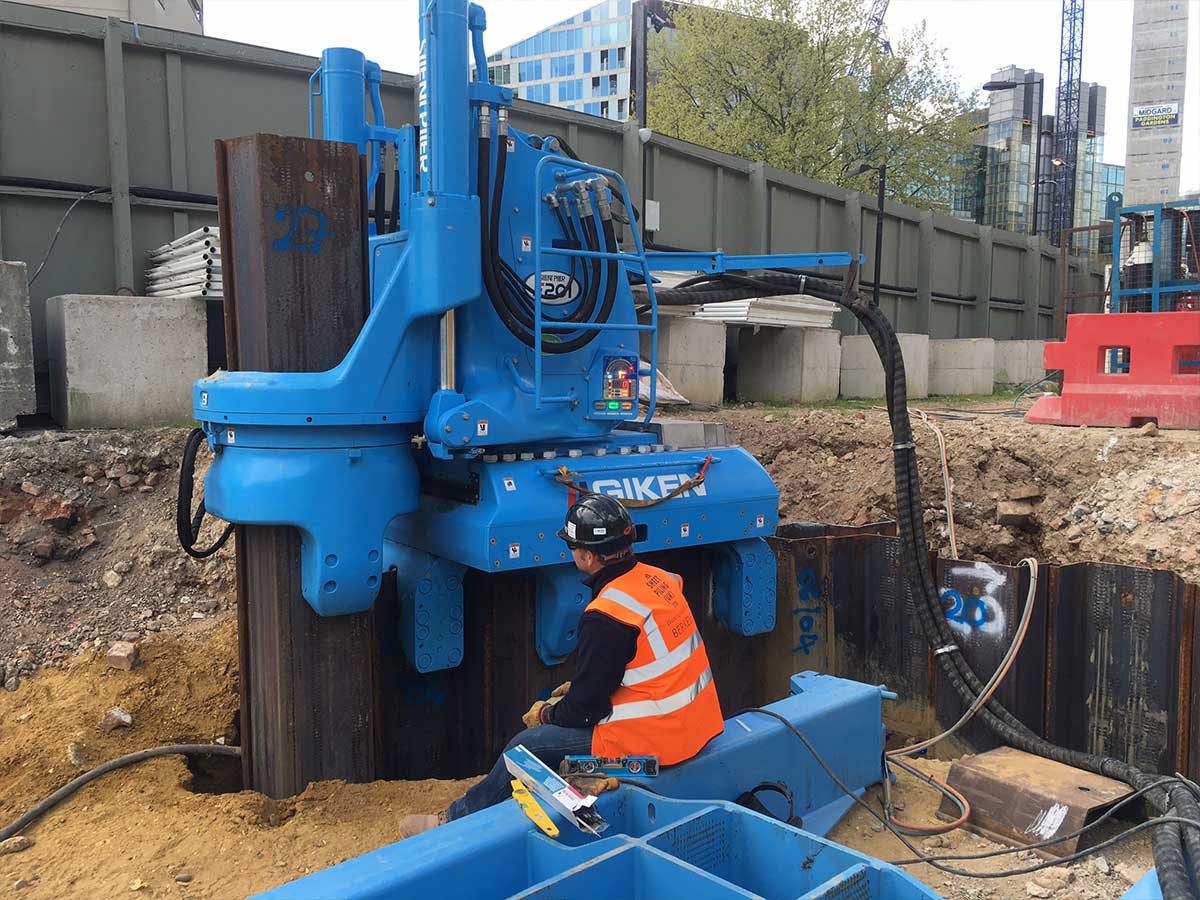Sheet Piling Explained
Sheet piles are, as the name suggests, narrow sheets of material, usually designed with an angular profile and with interlocking edges, so that multiple sheet piles can be fitted together to form a structurally sound and often watertight wall or barrier.
They are usually made of steel but wood can also be used, as can precast reinforced concrete and even certain types of plastic. Steel sheet piles are often manufactured using sustainable recycled metals and, where soil chemistry requires it, they are sprayed with an anti-corrosive coating.
Steel sheet piles are the most commonly used type, as they are very versatile. They can be welded or bolted together vertically to provide a greater length or depth, if required. They are very resistant to the pressures caused by driving and provide the best strength option, compared to their weight.
Uses of Sheet Piling
Sheet piling can be used to provide permanent foundations, permanent or temporary retaining walls and as extremely strong shuttering when a poured concrete foundation or retaining wall is required. Sheet piling can form the basis for an underground structure such as a basement or underground car park. It is also used for marine applications, often being used within harbour wall strengthening projects, but can also be found in use by projects requiring retaining walls along riverbanks or canals, or in projects focused on bridge repair and building.


Designs of Sheet Piles
There are three forms or shapes of steel sheet piles: Z-shaped, U-shaped and Straight Web Sections.
Z-shaped sheet piles are considered to be the most efficient of the shapes. They are used for intermediate and deep wall construction and commonly for tied back and cantilever retaining walls. U-shaped profiles are used for similar applications, but their resistance to bending is lower than Z-shaped piles.
Straight web sections are intended to be used to interlock and form circular or enclosed structures and are backfilled with soil or gravel.


Installing Sheet Piling
The narrow sheets or sections are driven into the soil using vibratory hammers or impact hammers, if the ground is hard or particularly dense. For some applications where local conditions mean that there is a restriction on noise and vibration, hydraulic methods are used to insert the piles.
Top ten benefits of Sheet Piling
- Sheet Piling is quicker to install than building reinforced concrete walls.
- They are narrow, allowing them to be installed in restricted spaces.
- They do not result in damage to the surrounding ground, unlike bored or contiguous concrete piling.
- Sheet piling requires no excavation work.
- Steel piles, when treated, are suitable for use in all soil types.
- They can be installed before other works begin.
- They provide instant load-bearing capabilities.
- Steel piles can be finished to fit in with the visual design of a project.
- They can be used as curtain-walling, which contains the site for security and protection of the surrounding area from visual and environmental impact.
- They are made in a factory, not on site, so quality control of the components is better.
NOTES TO EDITORS
Sheet Piling (UK) Limited is one of the UK's leading piling contractors. Owning and operating a comprehensive range of specialist piling equipment Sheet Piling (UK) Ltd also carry extensive stocks of new and used piles enabling rapid reaction to any urgent requirements or emergency situations.